Chapter 5
Insight and Level 2: Convince
The Power of Story
In the latter half of the 1700s, German astrologist and physician Franz Anton Mesmer treated his patients by looking deeply into their eyes and waving magnets in front of their faces. Mesmer believed barriers in our bodies disrupted the natural flow of the processes that gave us life and health. He further believed his penetrating eye gazing and object waving restored natural order inside his patients and relieved all sorts of maladies.
In fact, he is reported to have cured headaches, swooning, blindness, paralysis, and a long list of additional ailments, even hemorrhoids. He became quite the celebrity, at one point touring major cities across Europe to demonstrate the efficacy and power of his medical advances. It is reported that as he worked with his patients, he gained complete control not just of their actions but also of their thoughts, their perceptions of reality, and their feelings.
When he did this, the patients were said to be . . . mesmerized! Thus, a new word was born.
Why should you care?
- You’re unlikely to forget the origin of the word mesmerized because you learned about it in the context of a story. (At least, you’re more likely to remember it than if we simply said, “The word mesmerized originates from Dr. Franz Mesmer, whose techniques became the basis for modern-day hypnotism.”)
- Insight sellers use the power of story to mesmerize, doing what the good doctor did to his patients, but without the magnet waving and creepy staring.
When people hear a story, they tend to relate it to their own experiences. The stories conjure memories that stir emotions. As we first covered in Rainmaking Conversations, stories take buyers on emotional journeys.
When listening to a story, people put themselves in the diegesis, the world of the story. Worry, fear, anger, worthlessness, love, acceptance, success, anticipation, validation, regret, victory, and freedom are all emotions great storytellers elicit as a matter of course. Not only do people feel these emotions when listening to a story, but they also see the images in their minds. When connected to powerful emotions, these images stick with them.
Insight selling isn’t just about finding and winning opportunities; it’s about driving change: helping buyers get from where they are now to a better place. It would be nice simply to be able to state to someone, “You’re here; you should be there” and have them see the light, but that isn’t how it happens.
When sellers tell stories and take buyers on an emotional journey, buyers don’t just understand where they want to be; they feel it and see it. If that feeling is different and better than how they feel now, they’ll be compelled to do something about it.
Dr. Joshua Gowin noted the following in Psychology Today4:
When you tell a story to [others], you can transfer experiences directly to their brain. They feel what you feel. They empathize. What’s more, when communicating most effectively, you can get a group of people’s brains to synchronize their activity. As you relate someone’s desires through a story, they become the desires of the audience. When trouble develops, they gasp in unison, and when desires are fulfilled they smile together.
For as long as you’ve got your audience’s attention, they are in your mind.
In other words, if you want people to be inspired by, and act on, the insights you bring, bring them in stories. You should, of course, relate nuggets of information in the form of stories. But sellers who bring it further—who literally structure their educational approach as a story—are much more successful than those who simply make a logical and data-focused presentation.
Buyers Want to Be Convinced
Questions Buyers Ask Themselves
When considering any course of action, buyers will ask themselves:
- What is this? (Connect the dots)
- What are the chances this (whatever this is) will work? (Risk)
- What are the chances that, in an acceptable period, we’ll achieve our desired results? (Return)
- What are the chances this will fail? (Risk)
- If this fails, what’s the most likely scenario, and what’s the worst-case scenario? (Risk)
- If we do this, who should we do it with? (Choice)
Imagine for a minute what the answers might look like from a buyer who is confident versus one who is not confident:
| Confident | Not Confident | |
|---|---|---|
| Connect the dots: understood need, compelling solution | “They get us. I get what they do to help.” | “I don’t think they get us, and I don’t get what they are proposing to do.” |
| Return: will work, achieves desired results | “This will work, the ROI case is very attractive, and I’m sure we’ll achieve it.” | “Well, I just don’t see it. I doubt we’ll achieve worthwhile results.” |
| Risk: chances of failure | “This is very low risk.” | “High. This is not a good bet at all.” |
| Risk: consequences of failure | “Even if it doesn’t work, it’s worth a shot because the downside is minimal.” | “If this doesn’t work, we’re toast.” |
| Choice: provider options | “I know exactly who the best choice is.” | “No one is standing out as a better choice or even a good choice.” |
These buyer decision-making questions closely mirror the basic premises of a value proposition we outlined in Chapter 2:
- Maximum return and connect the dots = resonate (“I need”)
- Best choice = differentiate (“The best option”)
- Minimum risk = substantiate (“I believe”)
It’s pretty simple: Buyers are looking for areas to place bets. They want to apply their resources—money, people, and time—to get a worthwhile return.
When sellers can present ideas for where to do this, and build confidence that they’ll work, they sell more. What’s interesting is we’ve found that when sellers who win approach buyers to present a new opportunity, they do it in a surprisingly consistent way (Figure 5.1).

Figure 5.1 Level 2: Convince
Convince Me to Consider This
Sellers might know with great certainty that when buyers buy, they will be better off as a result. But getting the buyers to see this as well—that’s a tall order for many a seller.
The most difficult parts of succeeding with opportunity insight for sellers are:
- Scheduling a conversation with the buyera
- Getting the buyer to say, “Let’s put this on our agenda for action and keep the process moving forward” because of initial conversations
Let’s look closely at the latter.
It’s interesting that sellers who are good at selling new opportunities and those who aren’t often feel equally strongly that a buyer should buy.
The sellers who win are more persuasive when telling the story to buyers. They’re more convincing.
Sellers who are good at applying opportunity insight—whether they know it or not—often follow the same format for inspiring buyers to put something on their agendas. The great thing is this: The format is straightforward and learnable. We call this format a convincing story.
Before a Convincing Story-Focused Meeting
Before you craft your convincing story, you must answer three questions regarding your buyers:
- What do I want them to learn?
- What do I want them to feel?
- What do I want them to do?
To answer these questions best, sellers who win find out as much as they can in the following areas before the meeting:
- The strategy of the organization, including areas slated for change or action
- The key items on the agenda of the specific executives who will attend the meeting
- Insight into stakeholders and how to succeed communicating with them
- What the organization has done in the past, and is doing now, in its area of concern
- Whether any particular trigger events may have happened that lend themselves to their offering
- Anything else that might be relevant to making the meeting most productive (e.g., background of the issue, typical decision and buying process, risk tolerance, priorities that might compete with yours, preconceived notions about what you sell)
Can sellers uncover all this information all the time? No. But many sellers fail to ask the simplest questions, such as, “Because we have our meeting coming up on the twenty-ninth this month, would you connect me with someone who can share relevant background so that I can make our time together most productive?”
Most executives—those who are at the level to find and release funds outside of the typical budget cycle or who set the budget itself for upcoming initiatives—prefer sellers to be prepared when they show up.
Jack Kline, president and chief executive officer, Christie Digital Systems USA, Inc., told us:
One of my worst nightmares is to have allotted time for a presentation and have somebody come in who shouldn’t be there—they know about their offering, but they don’t know how it’s going to fit into my business or solve my problem.
It’s clear within a short period of time that they’re not ready and I feel like I’m educating them. I’m spending the time to educate them on how they’re going to sell a product to me and I don’t like it. Tell me why you feel confident you can solve my problems. Tell me what it is that will allow me to have confidence in your solution. If you can stand up to those things, then I feel that you belong in the room.
Doing your homework before initial meetings with executives tends to go a long way toward establishing credibility and moving the sale forward.
Then format your story using the seven key components of the convincing story framework as follows.
Convincing Story Framework
A convincing story looks like the one shown in Figure 5.2b:
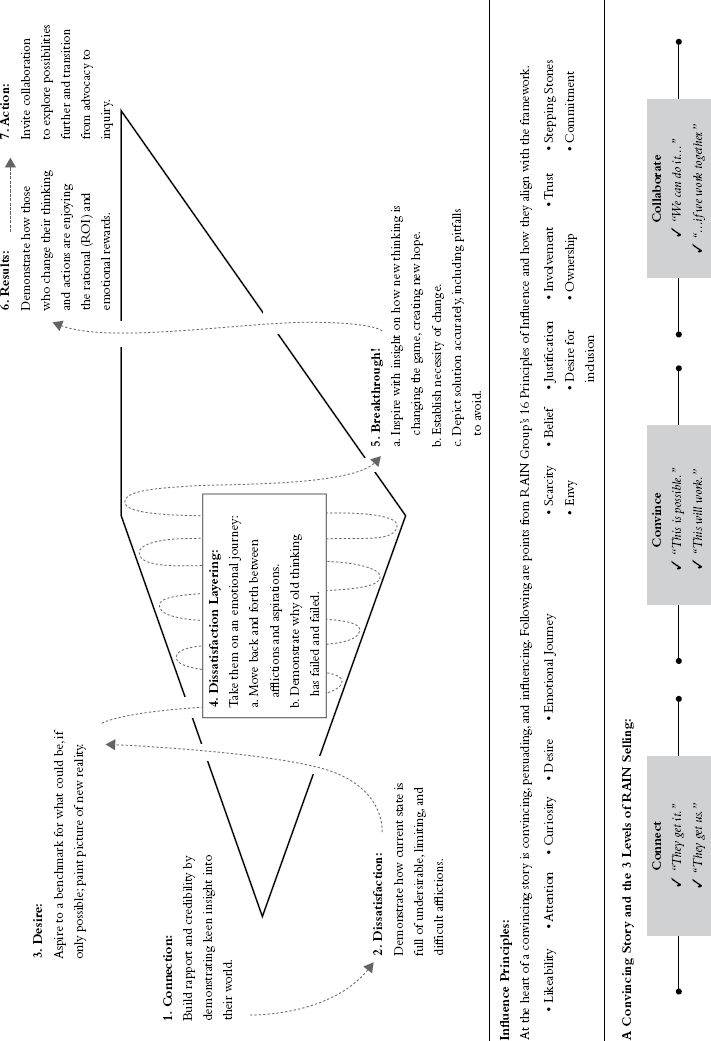
Figure 5.2 A Convincing Story Framework
These are the key points that happen in each stage.
1. Connection—Establish Credibility. The key finding in “I Can Make Your Brain Look Like Mine,” published in the Harvard Business Review, is that, “In good communication, a listener’s brain activity actually begins to mirror the speaker’s brain activity.” In the course of researching this book, we communicated with lead researcher and article author Dr. Uri Hasson, who told us, “Good stories resonate with the audience. To produce such stories the speaker has to take the listener’s perspective in my mind in order to generate the resonance stimulus.”c In other words, the more relevant the storyteller is right from the start, the stronger the emotions and the storyteller and listener connect.
Build rapport and establish credibility by demonstrating keen insight into the buyer’s world. You can do this with an overview of industry trends influencing buyers, an overview of technology issues that change the game, or an overview of any relevant issue that gets the buyer saying, “They get it,” or, “They get us.”
When we observe seller presentations, all too often we see that sellers with their products are positioned as the hero. This is a mistake. The buyer is the hero. Everything the seller does should serve the master of being relevant to the buyers, presented in their context, and focused on how to make them successful. With the buyer as hero, sellers do a much better job connecting while they convince, ultimately persuading the buyer to take action.
Once sellers connect with the buyer and establish they know what they’re talking about, they’ll get the buyer’s attention and build curiosity in hearing the rest of what they have to say.
Example
RAIN Group client Entelligence provides leading original equipment manufacturers, value-added resellers, and enterprise information technology (IT) users with the world’s top professionals to design, deploy, and manage enterprise hardware and software. Its best-in-the-industry system for hiring, training, and support guarantees its clients get the most talented consultants—on time, on budget, and on top of their game.
Buyers often do not know why they should consider what Entelligence sells or the results it achieves. Because the company’s approach to what it does is markedly different from how other companies operate, it needs to tell convincing stories.
We’ll share snippets of one of its convincing story presentations as this chapter unfolds.
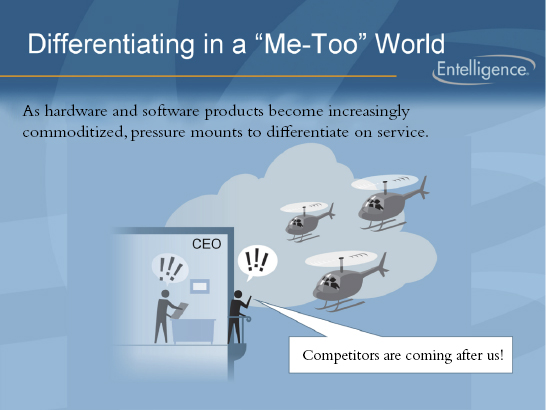
Figure 5.3 Focus on the Buyer’s Point of View
Note: At the opening of the story, Entelligence does not talk about itself. It discusses specifics of what’s going on at the buyer’s site. Slides like this one set up the story from the buyer’s point of view.
Source: Entelligence
2. Dissatisfaction—Name the Adversary. Next, establish what the current state is and why it’s not good enough. The heart of every action and change—and a key component of opportunity insight—is the buyer’s desire to be in a different, new place. When you identify the current state and why it’s not acceptable, you give the adversary a name. You put a target on its back.
The adversary can be almost any set of afflictions: lack of results, slipping market share, wasted time on work-arounds, ideas whose time has passed—anything. Insight selling masters don’t just tell people what to run toward; they also give people something to run away from.
As with story point 1, the more specific you can be because you did your homework, the more the messages will resonate.
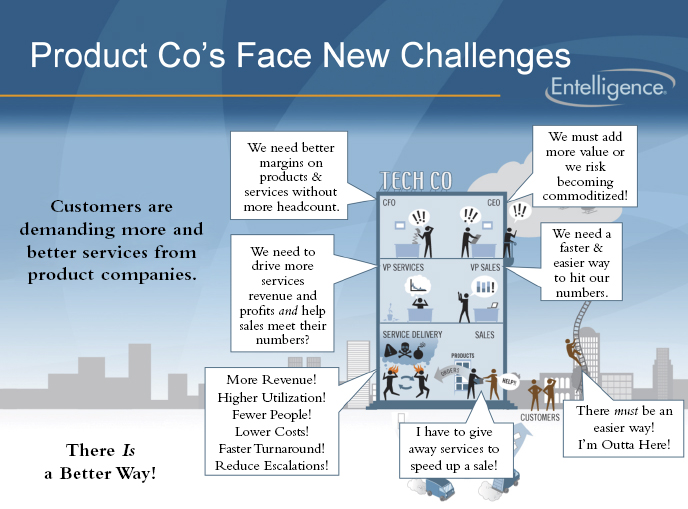
Figure 5.4 Dissatisfaction—Name the Adversary
Note: Early in the story, Entelligence gives the buyer plenty of dissatisfaction to run away from, doing an excellent job telling the story from multiple buyer points of view.
Source: Entelligence
3. Desire—Establish the Destination. People have a natural tendency to drive forward. But if they don’t know where they’re headed, as they say, any road will get them there.
Your ability to establish the destination—to help the buyer imagine some specific aspiration—is critical. Average sellers focus on establishing the path. They talk about product: “This is what we do and the way we do it.” These are how messages. Nobody cares about the how until they feel the depths of the why.
The destination establishes—in RAIN Selling terms—the possible new reality. What you get when you achieve the new reality is the answer to the question, Why? Answer powerfully enough, and you establish the basic premise for any change: leaving behind a dissatisfactory current state in favor of a new, improved one.
It bears mention here that sellers frequently overestimate their ability to present a compelling ROI case. When we deliver training programs on insight selling, we typically ask the client, “How capable is the sales force in defining and communicating the ROI case of (whatever it is they are selling)?”
Often the client says, “Well, I don’t think that’s something we really need to cover. This is something we’ve done in the past, and this is a sophisticated group. So I think we’re good here.”
When we meet the team at training, we frequently find the opposite is true. We are no longer surprised when a majority (and sometimes the entire group) can neither develop nor present a compelling ROI story. If your sales team can’t talk dollars and cents with buyers—both in general terms of the difference your solution can make and specifically in terms of their business—then its success with insight selling will be severely handicapped.
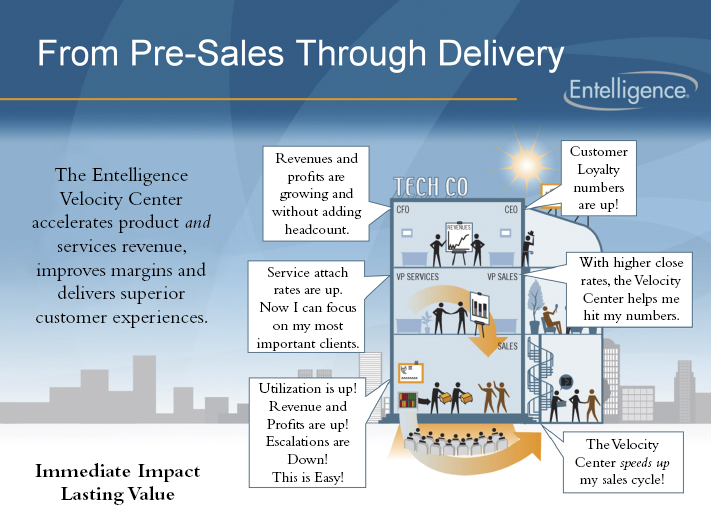
Figure 5.5 Desire—Establish the Destination
Note: Entelligence showed the before picture. This is the after picture. In the presentation itself, Entelligence is quite specific about each.
Source: Entelligence
4. Dissatisfaction Layering—Journey to the Depths of Despair. Simply suggesting, “Here’s where we are and why it isn’t good enough” isn’t, well, good enough. It’s too antiseptic. It doesn’t create the intense feeling of desire that’s so important for change and so critical for insight selling success.
How you establish dissatisfaction and desire isn’t a linear process. To do it best, weave back and forth between the undesirable current state and desirable future state.
Nancy Duarte, author of Resonate, studied the underlying format of some of the greatest persuasive speeches of all time, including Martin Luther King Jr.’s “I Have a Dream” speech, Steve Jobs’s 2007 iPhone launch speech, and the Gettysburg Address. In each, she saw a similar phenomenon we see in the best sales presentations. As she puts it6:
The middle [of the presentation] goes back and forth. It traverses between what is and what could be. What is and what could be. Because what you’re trying to do is make the status quo and the normal unappealing, and you want to draw them towards what it could be in the future with your idea adopted.
Now, on your way to change the world, people are going to resist. They’re not going to be excited. They may love the world the way it is so you’ll encounter resistance. That’s why you have to move back and forth. It’s similar to sailing. When you’re sailing against the wind and there’s wind resistance, you have to move back and forth, back and forth. That’s so you can capture the wind. You have to actually capture the resistance coming against you when you’re sailing.
Now, interesting, if you capture the wind just right, and you set your sail just right, your ship will actually sail faster than the wind itself. It’s a physics phenomenon. So by planting in there the way they’re going to resist between what is and what could be, it’s actually going to draw them towards your idea quicker than should you not do that.
As you do this, describe stories of what companies (or the buyers themselves) have tried that failed. Describe (and, later, overcome) common objections to moving forward. The net effect is the audience feels the undesirability of the current state more strongly by being reminded that others have been trapped here, have tried to get out, and couldn’t. Because people relate stories to themselves, they’ll feel trapped as well. They’ll feel the failure of others.
At the same time, you will remind them of the possible new reality that seems out of their reach. By moving back and forth between the current state and the possible new reality, you not only establish a very important rational gap (You’re here—but you could be there!), but you also maximize the negative feelings associated with being in the bad place and stoke the desire to get to the good place.
5. Breakthrough!—Introduce a New Hope. Just when buyers feel resigned to continue on with life in the undesirable current state—where many (like them) are stuck—you show them a different path. A path they do not know about that others have taken to successfully climb out of the hole. A new hope!
When they see what others have achieved when they made a change, they’ll want to achieve the same. The concept is envy, and envy is a powerful emotion. Still, making the change a reality is not necessarily a slam dunk. If it were easy, everyone would do it. However, this is what you help people do—and what you have a track record of doing. You can guide them around the many pitfalls that can get in the way.
This establishes you not only as differentiated (the best choice—the only choice!), but also as a straight shooter who’s on the buyers’ side. Do so and buyers will start to believe you and trust in you and the solution that much more.
Some sellers get this far but then don’t confront the harsh realities of what might go wrong. When this happens, buyers see the solution and understand the ROI case is compelling, but they still doubt they can achieve it or doubt the seller’s motives if they feel like the seller is holding back. Sellers who are forthright convince buyers that their knowledge, collaboration, and trusted partnership in the journey is essential to their success.
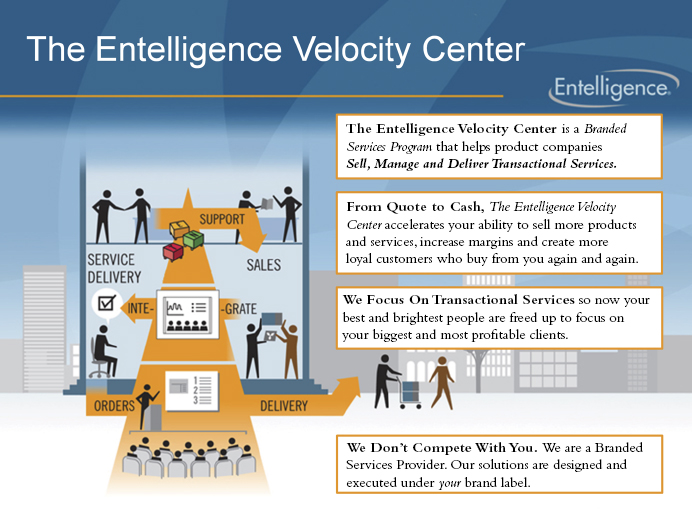
Figure 5.6 Customize for the Buyer
Note: Entelligence customizes each presentation specifically for each buyer, though key message points tend to be the same for how it helps and why it’s different.
Source: Entelligence
6. Results—Communicate Results, Create the Feelings. The better you can build a custom ROI case and show previous similar results, the more confidence you’ll build that the buyer can achieve them, too. When you show what others have achieved, you strengthen the emotional journey because buyers will imagine themselves having achieved those same things. They’ll envy the results, and here again, envy is potent.
As much as some will argue to the contrary, business buyers, like consumers, buy with their hearts and justify with their heads. Selling an idea isn’t only about selling the numbers. Use the convincing story structure, and you’ll give buyers the financial justification case they need for themselves and others with the ROI. Also, you’ll cause them to want the results and everything else your solution delivers all the more.
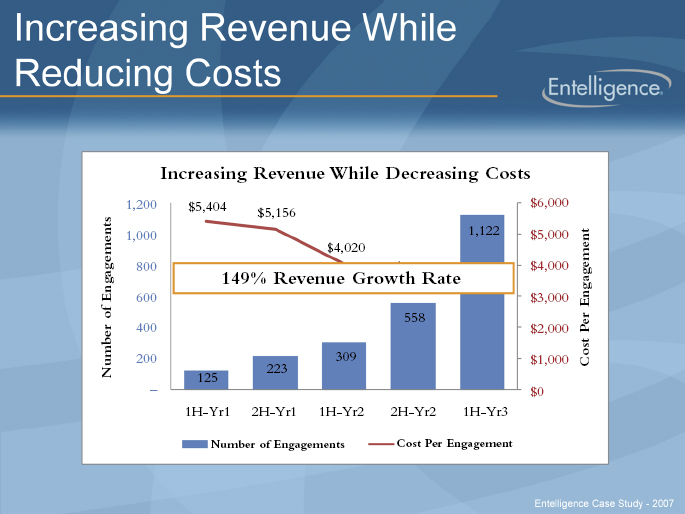
Figure 5.7 Substantiate Your Claims
Note: Entelligence had case studies that helped substantiate claims; it presented hard numbers, including:
- 149 percent revenue growth rate
- 29 percent annual cost reduction
- 17 percent market share increase
- 96 percent very satisfied customer experience
- 194 percent increase in product sales
- 733 percent ROI on Velocity Center (its offering) in 90 days
- $.05 earnings per share per year increase
Source: Entelligence
7. Action—Invite Collaboration. Every seller has been told to recommend action, specifically a next step, at each stage of the sales process. Scarce is the advice, however, to build in collaboration as an explicit step. When buyers feel like sellers collaborate with them, they are much more likely to buy and to buy from that particular seller.
Many sellers try to move too quickly to make a sale. At this point, your call to action will be to invite discussion and collaboration. Jumping from here to closing is a big leap. By asking only for a commitment to collaborate, you shorten that leap with a stepping stone that moves you closer to the sale and increases its likelihood of happening.
Collaboration is a core component of insight selling and the convincing story framework. Collaboration involves the buyer in the story itself. When people are involved in something, they become invested in its success. The more they become invested in something, the more they take ownership of seeing it through.
Perhaps most important, collaboration creates shared experience. Shared experience leads to intimacy in the, “I know you really well” sense. Intimacy is a pillar of trust. And trust is essential for buyers to take a leap of faith with you and buy whatever it is you’re selling.
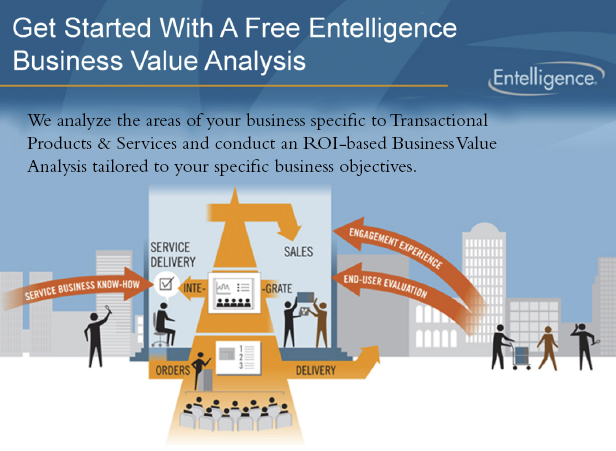
Figure 5.9 Invite Collaboration
Note: Entelligence led with a free business value analysis as an invitation to collaborate.
Source: Entelligence
Use the convincing story structure, and you’ll achieve the three outcomes you need to sell an idea: Learn, feel, and do.
Learn
- Current state is not good enough. It needs to change. (Resonate)
- You get it and get them because, without even talking much and like you’re reading their minds, you’ve described what their world is like. (Resonate) You must know what you’re talking about (Substantiate) and have done your homework. (Resonate, Differentiate, Substantiate)
- Possible new reality is much more desirable. The stakes are high if you can win this game. (Resonate)
- The rational impact (the ROI) is clear. (Resonate)
- There’s a path to get there, but it requires different thinking and action. (Resonate and Differentiate)
- But do it right and results are achievable. (Resonate and Substantiate)
Feel
- The depth of how undesirable their current state is—its frustrations, problems, and difficulties. (Resonate)
- The full desirability of the possible new reality and everything that comes with it (e.g., money, success, attention, relief, and happiness), even envy of those who have what they don’t. (Resonate)
- Confidence that you, your offering, and your company can help them get the results. (Differentiate, Substantiate)
- Confidence that the result is achievable and, at the same time, worth the risk. (Resonate, Substantiate)
Do
Collaborate with you to bring the new reality to life. (Resonate, Differentiate, Substantiate)
Chapter Summary
Overview
- Insight selling isn’t just about finding and winning opportunities; it’s also about driving change: helping buyers get from where they are now to a better place.
- When sellers tell convincing stories and take buyers on an emotional journey, the buyers don’t just understand where they want to be, but they also feel it and see it. If that feeling is different and better than the current state, they’ll be compelled to do something about it.
Key Takeaways
- To bring insight selling alive, tell a convincing story.
- Before you craft your convincing story, you must answer three questions regarding your buyers: (1) What do I want them to learn? (2) What do I want them to feel? and (3) What do I want them to do?
- The seven stages in a convincing story are:
- Connection: Establish credibility.
- Dissatisfaction: Name the adversary.
- Desire: Establish the destination.
- Dissatisfaction layering: Journey to the depths of despair.
- Breakthrough! Introduce a new hope.
- Results: Communicate results; create the feelings.
- Action: Invite collaboration.
- Couple a focus on the ROI—the potential gain—with fear of loss. If you help buyers see the negative impact of inaction, you will be more persuasive and effective change agents.
- Use the convincing story structure, and you’ll achieve the three outcomes you need to sell an idea: Learn, feel, and do.
